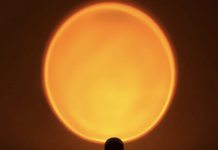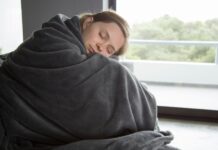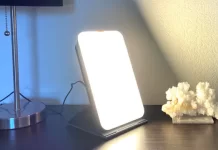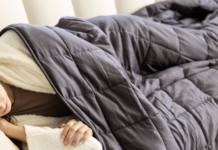Depression known as seasonal affective disorder (SAD) typically strikes in the winter at the same time every year. Often referred to as seasonal depression, SAD can negatively impact your mood, food, sleep, energy, and sense of self-worth. It can also negatively impact your relationships and social life, job, and education. You could feel like a whole different person depending on the weather and the seasons —hopeless, depressed, tense, or pressured, and uninterested in people or activities you usually enjoy.
SAD often starts in fall or winter when the days get shorter and lasts until the lighter days of spring or early summer; however a less prevalent type of the illness causes depression during the summer.
A milder version of winter blues may affect as many as 10 to 20 percent of people, whereas SAD affects approximately 1% to 2% of the population, especially women and young people.
Is seasonal affective disorder (SAD) something I have?
Many people experience a slight increase in melancholy or fatigue during the winter months due to the reduced light, warmth, and color; however, this isn’t always a cause for concern. However, you might have seasonal affective disorder if your symptoms appear about the same time every year, significantly lower your quality of life, and get better as the seasons change.
- I can’t stop wanting to sleep or I’m having problems falling asleep.
- It’s hard for me to do everyday chores since I’m so exhausted.
- My appetite has changed, and I now have a greater need for starchy and sweet meals.
- I’m becoming bigger.
- I feel depressed, guilty, and self-critical.
- I have no hope.
- I get agitated easily.
- I’m staying away from people and things I used to like.
- I’m nervous and anxious.
- I no longer want to have sex or have other physical interactions.
Signs of seasonal depression
Seasonal affective illness shares many of the same symptoms as severe depression. The remission of symptoms in the spring and summer (or winter and fall in the case of summer SAD) sets SAD apart from depression.
Typical symptoms of SAD consist of:
- Depressed state and poor self-worth
- Loss of enjoyment or interest in previously enjoyed activities
- Changes in appetite and weight
- Being agitated, worried, or nervous
- Unknown pains and aches
- Modifications to sleeping habits
- Inability to concentrate
- Weakness and lethargy
- Diminished desire for sex
- Using drink or drugs as a comfort
- Depressing, hopeless, and despairing emotions
Similar to depression, SAD symptoms can differ in intensity from person to person, frequently as a result of geographic location and genetic susceptibility. For many, the symptoms normally start out mildly at the beginning of fall and develop worse as winter’s darkest days approach. The symptoms eventually go away by spring or early summer, at which point you feel normal and well once more.
You must have these cyclical symptoms for two or more years in a row in order to receive a clinical diagnosis of seasonal affective disorder. It’s time to get assistance if your depression feels overpowering and is negatively impacting your life, regardless of how long your symptoms have lasted or when they started.
Seasonal affective disorder causes
Although the precise causes of seasonal affective disorder are unknown, the majority of ideas link the disorder to the shorter winter days.
Winter’s shorter days and less sunshine exposure are hypothesized to have an impact on the body by:
Circadian rythms – Your body’s internal clock, also known as the sleep-wake cycle, controls your mood, hunger, and sleep in response to variations in light and dark. Winter’s longer days and longer nights can throw off your internal clock, making you feel drowsy, drowsy, and sluggish at inappropriate times.
Serotonin production. Winter’s shortened days might cause your body to produce less serotonin, a chemical that aids in mood regulation. A deficiency can negatively impact your sleep, appetite, memory, and sexual desire in addition to possibly causing sadness.
Melatonin generation. Your brain creates the hormone melatonin during the dark to aid in sleep, but during the day, sunshine causes the brain to cease producing melatonin, causing you to feel awake and aware. But during the winter’s long nights and short days, your body can create too much melatonin, which would make you feel exhausted and sleepy.
Seasonal depression in the summer
Summer depression, a less prevalent variant of SAD, starts in late spring or early summer and disappears in fall. Summer SAD experts feel that longer days, more heat and humidity, and potentially even an increase in seasonal allergies are what cause the disorder, not shorter days and less sunlight.
While there are some changes, many summer SAD symptoms are similar to those of winter depression. If you have summer SAD, you are more likely to sleep too little than too much because of the longer days and shorter nights. Your doctor can advise using melatonin tablets to increase sleep by compensating for your body’s decreased melatonin production.
Your body’s circadian rhythms can also be reset by altering your sleeping habits, such as rising earlier in the morning and going to bed earlier at night (or even before it turns dark in some situations).
Seasonal affective disorder can have a wide range of etiology and contributing factors, much like any other type of depression. To improve your mood and manage your symptoms of depression, see the lifestyle adjustments listed below. As always, see your doctor for an appropriate diagnosis.
Risk factors for seasonal depression
- Your sex. Although women account for three out of every four SAD sufferers, men frequently have more severe symptoms.
- How old you are. Winter SAD is typically first identified in individuals between the ages of 18 and 30, and it becomes less common as one ages.
- Your family history. You have a higher risk if you have family members with SAD or another type of depression.
Tips for preventing the symptoms of seasonal depression
While there may be no cure for seasonal depression for many of us, there are some things that you can do to lessen the effects and feelings associated with seasonal depression.
Tip #1 – Enjoy as much free natural sunlight as you can!
Although seasonal depression might make it difficult to drive oneself to change, there are many things you can do to improve your mood. Though recovery takes time, you should start to feel slightly better every day. You may help lift the veil of seasonal affective disorder and prevent its recurrence by forming healthy habits and making time for enjoyment and relaxation throughout your day.
Go outside as much as you can in the daytime and feel the sun without wearing sunglasses (but never stare directly at the sun). Even in the limited amounts that wintertime provides, sunlight can elevate serotonin levels and elevate your mood.
- Go for a quick stroll outside, and if the weather permits, have your coffee there as well.
- Open drapes and blinds, and take a seat close to windows to let in more natural light into your house and place of business.
- Some people discover that utilizing daylight simulation bulbs or lighter wall paints helps them cope with winter SAD.
Tip #2 – Regular exercise can have the similar results as medication.
Exercise on a regular basis is an effective approach to combat seasonal depression, particularly if you can do it outside during the day. Frequent exercise increases endorphins, serotonin, and other feel-good neurotransmitters. Actually, exercise is just as effective as antidepressant medicine in treating mild to moderate depression. Exercise can also help you sleep better and feel better about yourself.
Look for rhythmic and continuous exercises. Exercise that uses rhythm, such as walking, weightlifting, swimming, martial arts, or dancing, and involves both arms and legs is best for depression.
Try to get in 30 to 60 minutes of exercise each day. For example, walking a dog may be an excellent form of exercise for both you and the pet, as well as a wonderful opportunity to get outside and socialize with other people.
Tip #3 – Reach out to loved ones and ask for their assistance.
Maintaining close relationships is essential to managing SAD and minimizing feelings of solitude. Engage in social interactions even when you’re not feeling it. Even if it could feel more cozy to hide inside your shell, social interaction will improve your attitude. Make an attempt to reestablish or forge new relationships, even if you’ve distanced yourself from once-important ones.
Join a depression support group. Sometimes, you can feel better just by talking to someone about what you’re going through. You might feel less alone and find inspiration to make positive changes by surrounding yourself with like-minded people.
Enroll in a class, join a club, or join a regular special interest group to meet new people who share your interests. Make sure the option you select is enjoyable for you.
Volunteer. One of the best methods to beat SAD is to help others, grow your social network, and feel better about yourself while benefiting the community.
Set up a coffee date with an old buddy by phone or email. Or make an effort to connect with a new person—a neighbor or coworker, for instance. Be the one to break the ice, even if most of us find it awkward to reach out.
Tip #4 – Make a healthy diet a priority
Throughout the day, consume short, well-balanced meals that are high in fresh fruit and vegetables to maintain your energy levels and reduce mood fluctuations.
- Complex carbs are a better option, even though SAD symptoms can make you seek sweet foods and simple carbohydrates like pasta and white bread. Bananas, whole grain bread, brown rice, oatmeal, and other foods can raise your feel-good serotonin levels without giving you a sugar crash.
- Certain omega-3 fat-rich foods, such oily fish, walnuts, soybeans, and flaxseeds, can help lift your spirits and possibly increase the efficiency of antidepressant drugs.
Tip #5 – Find ways to deal with stress and anxiety
Overstress can worsen or even cause sadness, regardless of the season.
Do your best to remove or lessen the situations that cause anxiety. Make a plan to avoid or lessen the effects of the things in your life that are causing you stress, such as an excessive workload at work or relationships that don’t support you.
Regularly using relaxation techniques can improve your sense of joy and wellbeing, help you manage stress, and lessen unpleasant emotions like fear and anger. Try progressive muscular relaxation, yoga, or meditation.
Every day, engage in an activity you enjoy or used to. You can push yourself to accomplish things even when you don’t feel like it, even though you can’t make yourself feel good or have fun. Once you’re out and about, you might be amazed at how much better you feel. Make time for enjoyable hobbies that you enjoy, such as painting, piano playing, automobile maintenance, or just hanging out with friends. Having fun is a terrific way to relieve stress.
Light therapy to treat seasonal affective disorder.
Light therapy, also referred to as phototherapy, is the cornerstone of treatment for winter-related SAD. By exposing you to strong light that replicates natural outdoor light, light therapy seeks to replace the lost daylight of the winter months. Regular exposure can reduce the amount of melatonin secreted by the brain, making you feel less depressed and more awake and aware.
It has been demonstrated that light treatment works in up to 85% of cases of SAD. Nevertheless, the duration and time of exposure required may differ based on your symptoms and circadian cycle, so you will require advice from a medical expert or mental health specialist to determine the appropriate dosage.
You can also get assistance from your physician or therapist in selecting a safe and efficient light treatment device. (Even though tanning beds provide enough light, treating SAD with them is never a good idea because the UV rays they emit can damage the skin and eyes.)
For light treatment to be effective during the winter, daily application is required. Initiating phototherapy prior to the onset of autumnal symptoms could potentially aid in preventing seasonal affective disorder.
There are two methods for administering light therapy
A light box
Otherwise known as a SAD Lamp for seasonal depression.
Up to 10 times the intensity of typical home illumination can be achieved using a light box. For 15 to 30 minutes every morning, you essentially just sit 12 inches in front of a 10,000-lux light box. Harmful ultraviolet (UV) rays are filtered out of the white light that the light box emits in a controlled amount.
You should carry on with your morning activities, such as eating breakfast, reading the newspaper, or using the computer, even though you need light to enter your eyes. In most cases, the antidepressant effect wears off within two weeks, and symptoms of SAD recover within a few days.
You can purchase a light box without a prescription, but you might wish to consult a specialist to track the effects of the treatment. Although there aren’t many negative effects from light treatment, before utilizing a light box for any eye or skin conditions, speak with your doctor. Also, if you have bipolar disorder, be aware that light treatment may set off a manic episode.
A dawn simulator
A dawn simulator is a gadget that simulates the rising sun and wakes you up by gradually increasing the brightness in your bedroom in the morning. The light intensifies over the course of 30 to 45 minutes, much like sunshine does. You don’t wake up in the dark; it appears to be a sunny morning. Your mood can be lifted and your circadian rhythm corrected by doing this. With bipolar disorder, light boxes can cause mania or hypomania, but with a dawn simulator, there is no such risk.
If SAD is affecting you in a way that you cannot handle with the above information, please contact a medical professional.
Not everyone responds well to light therapy, despite the fact that it is frequently a very successful treatment for SAD or the winter blues. If that’s the case, don’t give up; there are lots of self-help methods and other successful therapy alternatives available to help you feel better.






























